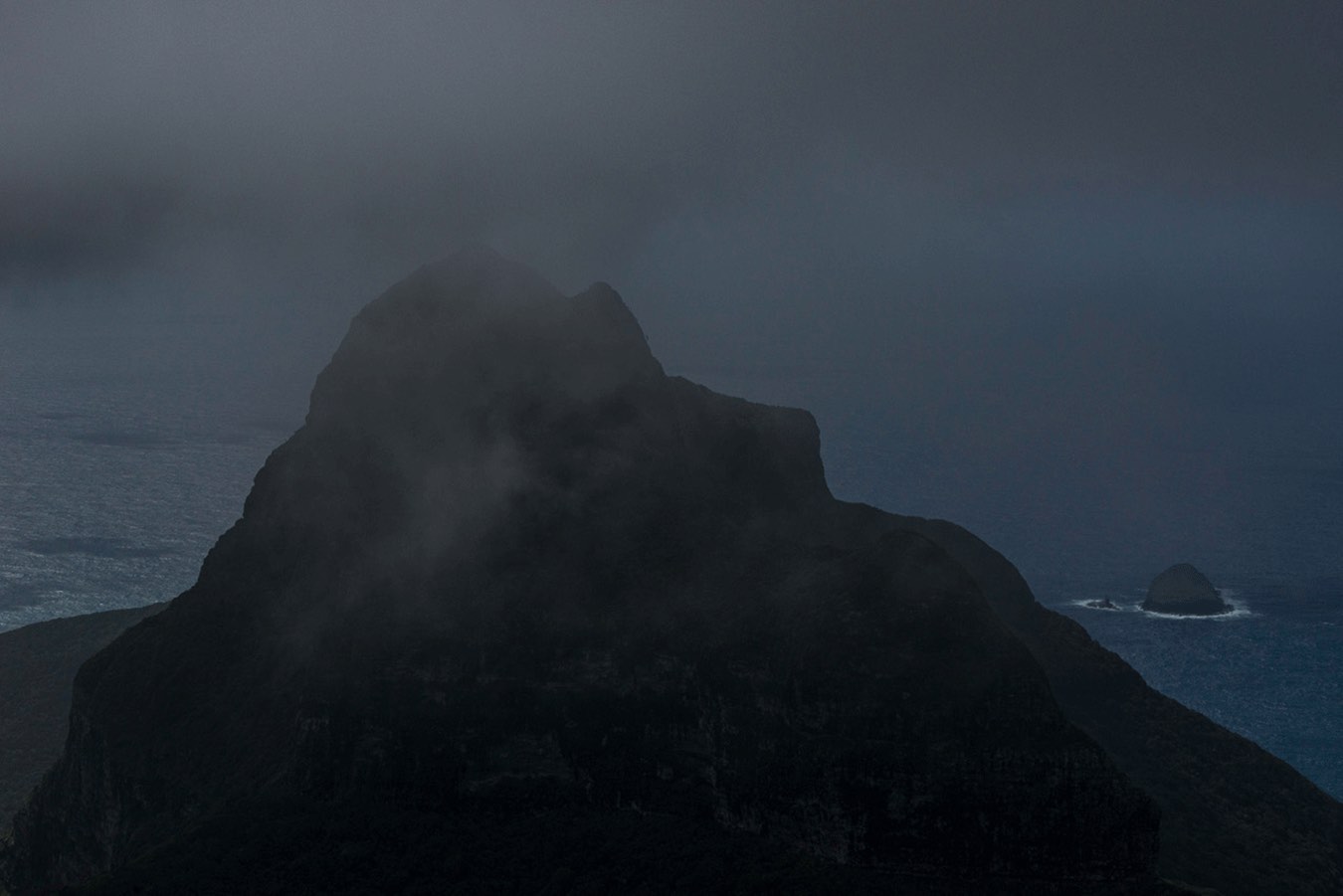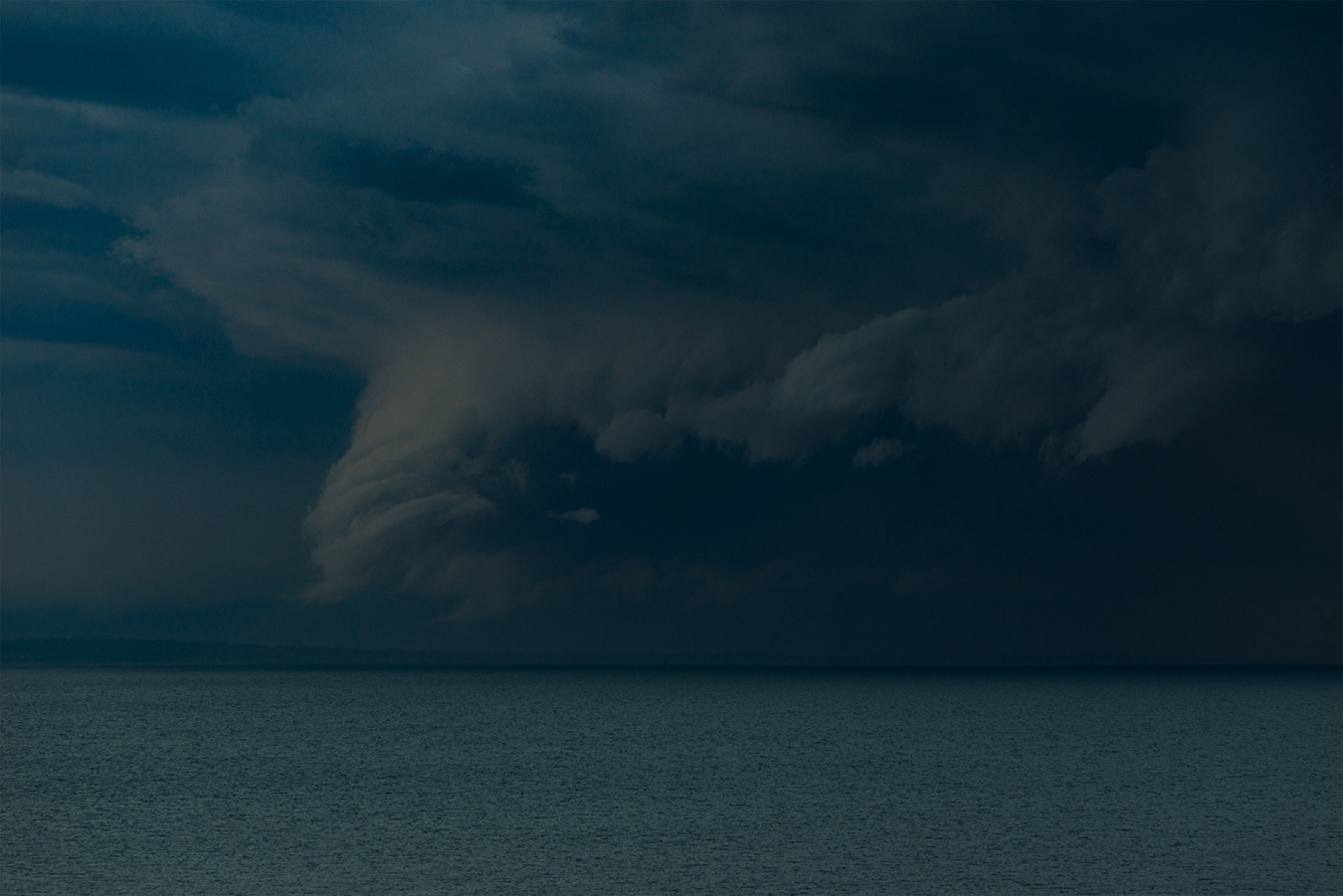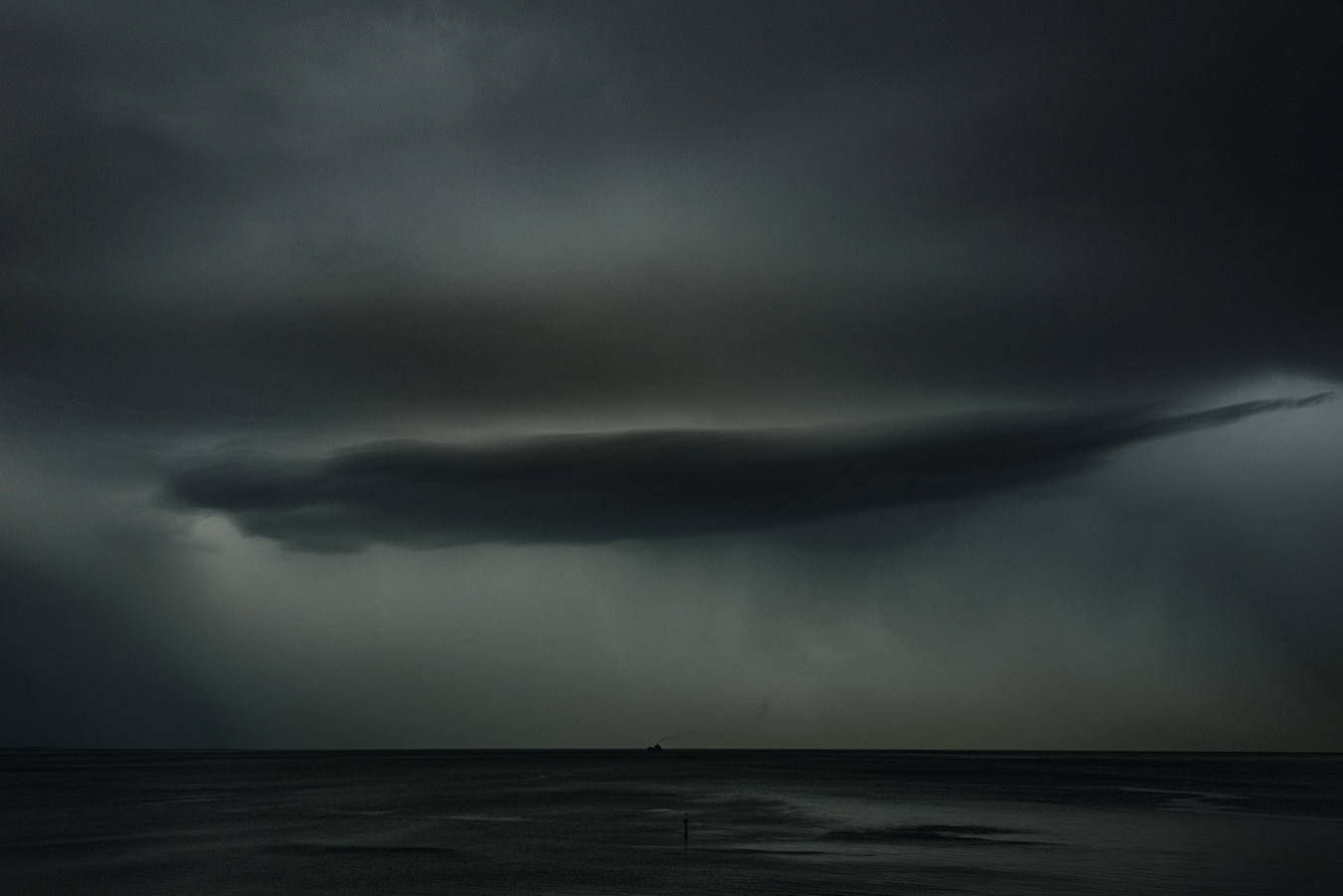Andrew Gash: Zen and the art of photography

Where and how did this body of work begin?
This body of work began in May 2018 when I was accepted into the Photography Studies College, Master in Arts (Photography) program in Melbourne.
Inspired by nature, it examines the proposal that the making of photographic landscape imagery can become more contemplative, meditative and imaginative through the influence of a Zen based practice of Awareness or Flow. And that in this practice is a method of opening one’s creativity inwards to a more intuitive, experiential and non-linear type of process, enabling fresh, unconditioned ways of seeing, perceiving and being (in nature).

How do you explain Zen to the uninitiated?
Not easy, but I’ll try.
In Zen, in the action of no-action or letting go of intention (wu-wei) a cardinal aspect of the true creative process is set forth, the mind is silenced, and the work is allowed to express itself through a continuous stream of spontaneity that emerges from the rhythm of circumstances.
When we stop categorising our perceptions in a rational frame of reference we open ourselves to direct experience, then the separation between the perceiver (photographer) and what is perceived (the subject/object being photographed) dissolves and disappears.
“A state of no-thingness or selflessness is called Mu (literally meaning "no") in which I become an empty vessel, filled by what the eyes see. Then I can let what is photographed flow through this Mu, without any "thinking" on my part. “The dance of Me and Mu – the dance of the cosmos.”
A more western explanation, that is perhaps easier to understand and something that we can all relate to, comes from Mihaly Csikszentmihalyi, who comments in his book Flow: The Psychology of Optimal Experience, “And yet while it (flow) lasts, consciousness works smoothly, action follows action seamlessly. In normal life, we keep interrupting what we do with doubts and questions. Repeatedly we question the necessity of our actions, and evaluate critically the reasons for carrying them out. But in flow there is no need to reflect, because the action carries us forward as if by magic.”

In the West, we learn mostly through explanations, specific instructions and referencing and comparing - concepts from others, by "the known" or "learned" ( doing ). In Zen and its arts, space is created for the process of discovery to take place by "the unknown" or "unlearned" (being).
The process of discovery and "being" is the endless spring of creativity, always bright, fresh, and spontaneous.
What matters is that it is already present in each one of us, waiting to be uncovered. As young children it is our natural state, but for us to ‘survive’ in the ‘real' world, it is gradually conditioned out of us by our parents and authority figures and institutions and we forget who we once were - we forget how to simply “be”.
In the creation and viewing of art and photography, the Eastern or Zen approach is experiential and intuitive, where it is essential to be fully present and aware and "feel" a subject, object, work of art or a photograph and give feedback based on those feeling and experiences rather than as we do mostly in the West, trying to intellectualise a subject, object, work of art or a photograph and critique it based on thoughts, references, comparisons and concepts from others we have learned.
Photography is time-based art form – how do you begin to make it non-linear?
As briefly explained above when one is directly experiencing or in flow, where the ego self, inner judge, or barking dog has let go and surrendered to simply being there is no sense of time.
Through the practice of enquiry one learns to bring attention or awareness inwards away from the head and mind and into the body. Gradually and more quickly when one is well practiced, stillness and silence, our true nature arise in the body and the mind recedes and we are just presence. The mind can still function in order to communicate but It is simply is not strong enough compete with this state of pure awareness. So the chatter and the suffering disappear. This is the state of Satori. We are all capable of this, we are born with this, we have just forgotten. And it can be taught. It is not something outside of us, or something we lack. In fact it is not something we can search for or seek.
That is the conundrum and the biggest hurdle in finding Satori - our true nature. Another is that our Ego/Personality or Inner Judge does not want change, it is very afraid of it and will resist strongly any initial attempts to transform ourselves, often temporarily increasing our sense of suffering.
The concept of time only reappears when the mind re-engages.

You’ve explored the minimalist landscape in earlier bodies of work. How was this different to the way you’d worked previously? What was your actual practice to produce these images?
This was different in that I didn’t do any research or any real planning. A lot of it was very spontaneous.
In my written research I was very aware of the over influence of The Dusseldorf School and Stephen Shore's work on the present generation of landscape photographers. I booked a couple of week-long hikes carrying minimal equipment - a walking meditation.
One often has to photograph quite quickly and spontaneously. There are all sorts of surprises just around the corner when one is not in control of where one is going. I went back to some dunes near a friend’s farms that I looked after some ten years ago, a place that I had not photographed then, but had vivid memories of the unique quality of the light and the terrain.
I did a trip to New Zealand with my partner and her family. While there I had a mystical encounter with a beautiful valley where cloud just suddenly rolled in and for an amazing twenty minutes I was witness to "Leela: The Playfulness of the Cosmos" in action.
I moved house to a location where I looked out over Port Phillip Bay and became an acute observer of the subtle and visceral quality of light that played out over the constantly changing body of water that became my canvas.
The book is divided in halves, one set of images local to where you live, one made in transit. Was this practice portable or are the two halves intended to contrast and comment on two different ways of being/working?
The photographs in this book are about the interplay of the indistinct and the distinct while observing and contemplating nature. The merging of land/sky, sea/sky, sea/land. And the mysterious enigma that is the horizon line.
The book is divided into two halves and has two covers and two different introductions. One half of the book contains seascapes photographed from a fixed place of observation, 17.5 meters high, near where I live, of Port Phillip Bay, over eighteen months. The other half is of landscapes of mountains, dunes and valleys that I have observed whilst moving or trekking, through landscapes whilst travelling during the last eighteen months.

The title of the book is ‘Indistinct/Distinct’. This came about when a visiting English Professor of Photography, who liked my images, suggested I enquire into the "Sublime" in English Landscape painting. Whilst researching this movement I came across a story about the English Landscape Painter Joseph Mallord William Turner, who travelled extensively in the search of the sublime and beautiful.
As Turner aged his paintings became more abstract. To his contemporaries the pictures were ‘indistinct’. When told an American collector had complained about this, Turner replied “You should tell him that indistinctiveness is my forte.”
The concept of creative flow is widely considered to be something a little elusive and magical. Do you believe/have you experienced it to be readily accessible? What are three ways photographers can work to increase their connection and the probability of flow in creative life?
As I mentioned earlier, it can be taught and the more one practices it the more it becomes readily accessible. We have all had brief experiences of this flow where the mind stops briefly, where just for a moment we lose ourselves. Who is this who is observing the mind? Who am I (in this moment?). This is briefly the experience of enlightenment. For photographers and creative people it can be difficult. Our attachment to our egos and who we think we are is very strong. A lot of us are freelancers. It’s a tough and competitive market, when we are working and being seen and valued for our talents we are up and on a high, when we are not we can often be down and in a low. We need to find a balance.

That balance can be helped often by doing personal photographic projects or charitable photographic projects, or just charitable projects - helping others. Spending time in nature is a sure way to rebalance and reconnect. In my research for my Masters I came across a study that showed Americans spend 80 to 99 percent of their lives indoors, so most of them suffer from Nature Deficiency Syndrome, no wonder stress, anxiety and depression are so prevalent in our society. Combine that with rampant 'screen time’ and phone addiction and the search for validation from others on social media and we have the perfect storm.
When we find a project we absolutely love doing and there is a heartfelt connection when we are "in it" we can help increase our connection to flow and being.
By deliberately slowing down, breathing slowly and deeply, by bringing our attention inwards into our bodies away from our head, by enquiring into what I am feeling and where I am feeling in the body, by consciously cultivating an awareness or presence of being "here" now, we can connect with ourselves and our surroundings in a more vital and elemental way and encourage the probability of flow in our creative lives.
One question that we can ask ourselves regularly is: What am I experiencing in this moment?
Andrew Gash’s Indistinct/Distinct opens at Skylight Gallery, 95 Buckhurst St South Melbourne from January 16, 6-9pm. And continues until Jan 31.
